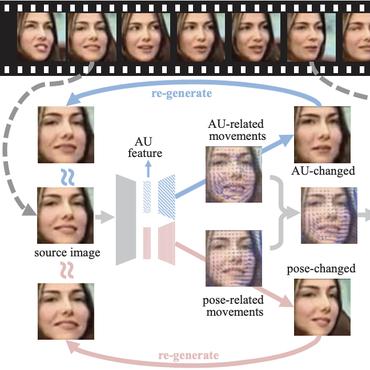Affect Analysis in-the-wild: Valence-Arousal, Expressions, Action Units and a Unified Framework
Affect recognition based on subjects' facial expressions has been a topic of major research in the attempt to generate machines that can understand the way subjects feel, act and react. In the past, due to the unavailability of large amounts of data captured in real-life situations, research has mainly focused on controlled environments. However, recently, social media and platforms have been widely used. Moreover, deep learning has emerged as a means to solve visual analysis and recognition problems. This paper exploits these advances and presents significant contributions for affect analysis and recognition in-the-wild. Affect analysis and recognition can be seen as a dual knowledge generation problem, involving: i) creation of new, large and rich in-the-wild databases and ii) design and training of novel deep neural architectures that are able to analyse affect over these databases and to successfully generalise their performance on other datasets. The paper focuses on large in-the-wild databases, i.e., Aff-Wild and Aff-Wild2 and presents the design of two classes of deep neural networks trained with these databases. The first class refers to uni-task affect recognition, focusing on prediction of the valence and arousal dimensional variables. The second class refers to estimation of all main behavior tasks, i.e. valence-arousal prediction; categorical emotion classification in seven basic facial expressions; facial Action Unit detection. A novel multi-task and holistic framework is presented which is able to jointly learn and effectively generalize and perform affect recognition over all existing in-the-wild databases. Large experimental studies illustrate the achieved performance improvement over the existing state-of-the-art in affect recognition.
PDF Abstract



 AffectNet
AffectNet
 DISFA
DISFA
 RAF-DB
RAF-DB
 Aff-Wild
Aff-Wild
 BP4D
BP4D
 OMG-Emotion
OMG-Emotion